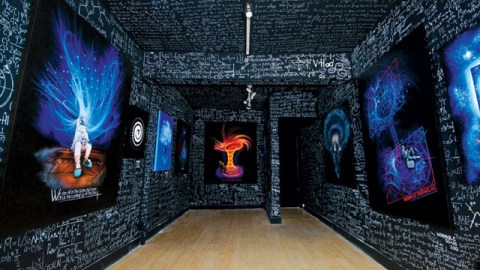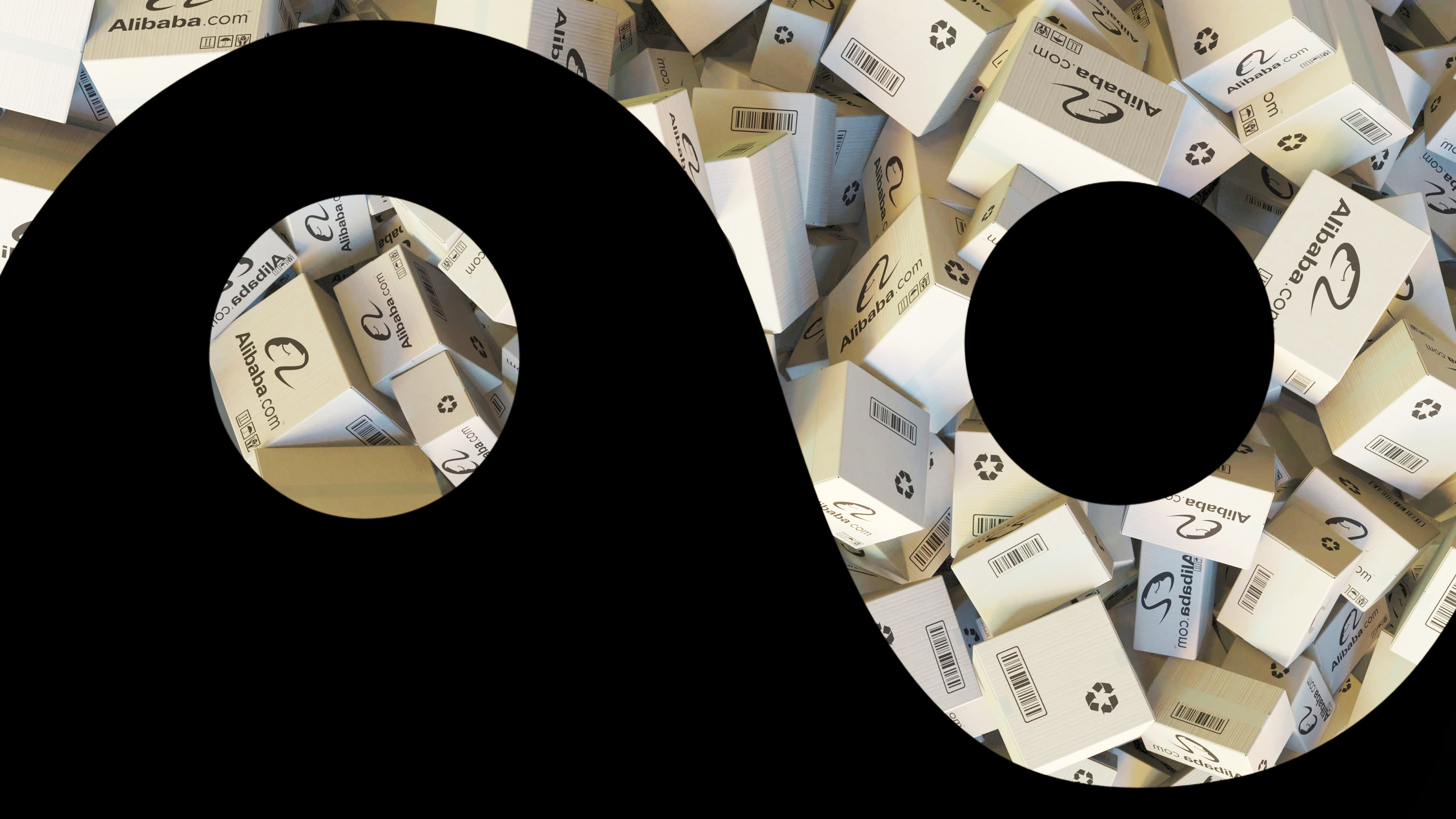Connecting All The Dots

GUEST POST BY JASON SILVA
Inspired by DEEP PATTERN STRUCTURE: Consciousness and the Articulation of the Possible by The Imaginary Foundation
“I expect to see the coming decades transform the planet into an art form; the new man, linked in a cosmic harmony that transcends time and space, will sensuously caress and mold and pattern every facet of the terrestrial artifact as if it were a work of art, and man himself will become an organic art form. There is a long road ahead, and the stars are only way stations, but we have begun the journey.” – Marshall McLuhan, interview in Playboy
To borrow Sanford Kwinter‘s words, the following “is written in a deliberately fervent and essayistic style: fully affirming the subjective nature of the writer’s position, and intending to provoke, at all and any cost.” I have connected the thoughts and ideas of many thinkers to deepen the point about the power of patterns.
One of the most wonderful things about the emerging global superbrain is that information is overflowing on a scale beyond what we can wrap our heads around. The electronic, collective, hive mind that we know as the Internet produces so much information that organizing this data — and extracting meaning from it — has become the conversation of our time.
Sanford Kwinter’s Far From Equilibrium tackles everything from technology to society to architecture under the thesis that creativity, catharsis, transformation and progressive breakthroughs occur far from equilibrium… So even while we may feel overwhelmed and intimidated by the informational overload and radical transformations of our times, we should, perhaps, take refuge in knowing that only good can come from this. He writes:
“….We accurately think of ourselves today not only as citizens of an information society, but literally as clusters of matter within an unbroken informational continuum: “We are all,” as the great composer Karlheinz Stockhausen once said, “transistors, in the literal sense. We send, receive and organize [and] so long as we are vital, our principle work is to capture and artfully incorporate the signals that surround us.”
Surely, a lot of the signal is meaningless noise, yet amidst this quasi-infinite pool of information, unique thought-patterns emerge, often with fabulous results. Clay Shirky often refers to the “Cognitive Surplus,” the overflowing output of the billion of minds participating in the electronic infosphere. A lot of this output is silly, but a lot of it is meaningful and wonderful. The key lies in curation; which is the result of pattern-recognition put into practice.
Within our current social media architecture, we are all ‘agents of pattern-recognition’: by “posting”, “tweeting” or “liking” things, we end up working for one another, organizing the sea of data info meaningful streams and enriching our minds like never before.
Matt Ridley’s recent TED Talk, “When Ideas Have Sex” points to this intercourse of information and how it births new thought-patterns… Ideas, freed from the confines of space and time by the invisible, wireless metabrain we call The Internet, collide with one another and explode into new ideas; accelerating the collective intelligence of the species. Creativity thrives when minds come together. The last great industrial strength creative catalyst was the city: It is no coincidence than when people migrate to cities in large numbers, creativity and innovation thrives. Now take this very idea and apply it to the web: the web essentially is a planetary-scale nervous system where individual minds take on the role of synapses, firing electrical pattern-signals to one another at light speed — the net effect being an astonishing increase in creative output.
Just as the human brain was revealed to have more synaptic connections than there are stars in the milky-way, the mind-to-mind connections happening within cyberspace share exponentially increasing order and complexity…. you can extrapolate the kind of emergent, hyper-creative ideas and innovation that will result.
“To understand is to perceive patterns,” says the Imaginary Foundation, whose heady, fantastical, utopian, graphic imagery is meant to bridge the worlds of science and art. They are really on to something. The brilliant Marshall McLuhan, ahead of his time in so many ways, made a similar point that “pattern-recognition” is the new differentiator in a world awash in information: “Information pours upon us, instantaneously. And continuously… Our electronically configured world has forced us to move from the habit of data classification to the mode of pattern recognition. We can no longer build serially, block-by-block, step-by-step, because instant communication insures that all factors of the environment and of experience co-exist in a state of active interplay.”
Ray Kurzweil too, expounds on this idea of the power of patterns:
“I describe myself as a patternist, and believe that if you put matter and energy in just the right pattern you create something that transcends it. Technology is a good example of that: you put together lenses and mechanical parts and some computers and some software in just the right combination and you create a reading machine for the blind. It’s something that transcends the semblance of parts you’ve put together. That is the nature of technology, and it’s the nature of the human brain. Biological molecules put in a certain combination create the transcending properties of human intelligence; you put notes and sounds together in just the rightcombination, and you create a Beethoven symphony or a Beatles song. So patterns have a power that transcends the parts of that pattern.”
In a recent essay by the Director of the Imaginary Foundation, titled ‘Deep Pattern Structure,’ he expounds:
“Alfred North Whitehead’s 1929 breakthrough, Process and Reality, moves us from a universe of things to a universe of unfolding, never-ending, intertwined processes. Seen through this lens it is very easy to view humans, our consciousness and all that we see and do as temporary patterns in the flux of unfolding process.”
R. Buckminster Fuller refers to us as “pattern integrities.” “Understanding order begins with understanding patterns,” he was known to say. E.J. White, who worked with Fuller, says that:
“For Fuller, the thinking process is not a matter of putting anything into the brain or taking anything out; he defines thinking as the dismissal of irrelevancies, as the definition of relationships” — in other words, thinking is simultaneously a form of filtering out the data that doesn’t fit while highlighting the things that do fit together… We dismiss whatever is an “irrelevancy” and retain only what fits, we form knowledge by ‘connecting the dots’… we understand things by perceiving patterns — we arrive at conclusions when we successfully reveal these patterns.”
He continues:
“Fuller’s primary vocation is as a poet. All his disciplines and talents — architect, engineer, philosopher, inventor, artist, cartographer, teacher — are just so many aspects of his chief function as integrator… the word “poet” is a very general term for a person who puts things together in an era of great specialization when most people are differentiating or taking things apart… For Fuller, the stuff of poetry is the patterns of human behavior and the environment, and the interacting hierarchies of physics and design and industry. This is why he can describe Einstein and Henry Ford as the greatest poets of the 20th century.”
In a recent article in Reality Sandwich, Simon G Powell proposed that patterned self-organization is a default condition of the universe:
“When you think about it, Nature is replete with instances of self-organization. Look at how, over time, various exquisitely ordered patterns crystallise out of the Universe. On a macroscopic scale you have stable and enduring spherical stars, solar systems, and spiral galaxies. On a microscopic scale you have atomic and molecular forms of organization. And on a psychological level, fed by all this ambient order and pattern, you have consciousness which also seems to organise itself into being (by way of the brain). Thus, patterned organisation of one form or another is what nature is proficient at doing over time. This being the case, is it possible that the amazing synchronicities and serendipities we experience when we’re doing what we love, or following our passions — the signs we pick up on when we follow our bliss- represent an emerging ‘higher level’ manifestation of self-organization? To make use of an alluring metaphor, are certain events and cultural processes akin to iron filings coming under the organising influence of a powerful magnet? Is serendipity just the playing out on the human level of the same emerging, patterned self-organization that drives evolution?”
Nikola Tesla, in his unpublished 1907 paper, “Man’s Greatest Achievement,” speaks of an original medium that is the ground of everything, a field of pure potential. It is in our engagement with this field that the role of consciousness and imagination comes to the fore.
Barry Ptolemy’s film Transcendent Man reminds us that the universe has been unfolding in patterns of greater complexity since the beginning of time. Says Ptolemy:
“First of all we are all patterns of information. Second, the universe has been revealing itself as patterns of information of increasing order since the big bang. From atoms, to molecules, to DNA, to brains, to technology, to us now merging with that technology. So the fact that this is happening isn’t particularly strange to a universe which continues to evolve and unfold at ever accelerating rates.”
That Barry illustrates these points using cinema is no coincidence: Much more than merely entertainment, cinema is a successful experiment in virtual reality; an effective, often inspiring way to unhinge our nervous systems from our “day-to-day” life and offer it to “the filmmaker” in a sort of cosmic, almost sexual surrender, to the divine powers of the storyteller, enabling him to carry our minds away to world’s beyond our imagination.
Gene Youngblood‘s brilliant EXPANDED CINEMA explores this very realm:
“In the ascending spiral of evolution each new generation absorbs the experiences of the previous level and expands upon them…This “consciousness expansion” has reached a velocity of evolutionary acceleration at which several transformations occur within the life-span of a single generation. Because of mankind’s inevitable symbiosis with the mind-manifesting hallucinogens of the ecology on the one hand, and his organic partnership with machines on the other, an increasing number of the inhabitants of this planet live virtually in another world.”
Cinema is just one way to be reminded that the mind can indeed inhabit multiple realities- Another way is through the power of individuals acting as ambassadors of ideas. These ‘Stand-Up’ philosophers (or ‘pattern-seekers’, as the imaginary Foundation refers to then) enthrall us with their erudition and intellectual flair. In addition to Buckminster Fuller, Marshall McLuhan and Ray Kurzweil, other examples include Joseph Campbell, Carl Sagan and Timothy Leary; the last of which came to see the brain as a bio-computer that could he hacked, improved upon, augmented. Higher intelligence by any means necessary might have been his motto. The brilliant Rene Daalder, filmmaker and creator of Space Collective describes Leary’s own evolution: “Timothy Leary befriended English writer Aldous Huxley, known for his book The Doors of Perception — a study of the effects of mind-expanding drugs, who told him: “Your role is quite simple, Timothy. Become a cheer leader for evolution,” he said, while reminding him that, “These are evolutionary matters. They cannot be rushed. Initiate artists, writers, poets, jazz musicians, elegant courtesans, painters, rich bohemians and they’ll initiate the intelligent rich. That’s how everything of culture and beauty and philosophic freedom has been passed on.”
Leary would go on to develop a populist view in which “humans could direct their personal evolution and…unplug the old mind of homo sapiens so a new one could take shape.” In later years Leary was arrested. It was here that Marshall McLuhan, media genius that he was, visited him in jail and taught Leary how to put the idiom “The medium is the message” into practice. If your idea is only as good as it’s packaging, and the package in this case was Mr Leary, then he’d better step it up. It was here that Leary became a “stand-up philosopher”.
“You call yourself a philosopher, a reformer. Fine. But the key to your work is advertising. You’re promoting a product. The new and improved accelerated brain. You must use the most current tactics for arousing consumer interest. Associate mind exploration or technology, or evolution with all the good things that the brain can produce — beauty, fun, philosophic wonder, religious revelation, increased intelligence, mystical romance. To dispel fear you must use your public image. You are the basic product endorser. Whenever you are photographed, smile. Wave reassuringly. Radiate courage. Never complain or appear angry. It’s okay if you come off as flamboyant and eccentric. You’re a professor, after all. But a confident attitude is the best advertisement. You must be known for your smile.”
Timothy Leary listened closely and took McLuhan’s advice. He later appeared on hundreds of talk shows. He espoused a possible future where science would grant us immortality by reprogramming our DNA and where our downloaded brains would become pure consciousness adrift in virtual reality. We’d become, in essence, paradise engineers, inhabiting a paradisaical substrate, built out of our iconography and memories, sculpted moment to moment, like Vanilla Sky’s lucid dream.
The result of these introversions, these journeys into the imagination and later outpourings in the form of creative, technological breakthroughs, has literally fine-tuned and readied us for the next radical shift in evolution: the exponentially emerging man-machine merger. Perhaps, as Edward O. Wilson said, we have decommissioned natural selection in the ultimate creative rebellion to our human frailties and limitations. We are setting the terms now. Craig Venter’s self-replicating cell whose parent is a computer has his name imprinted on it! We are stamping our signature on engineered life.
Another example is cyberspace, as Sanford Kwinter describes “the boundaryless new medium of “virtual” reality is not a simulated environment, as many continue to claim, but a new space altogether….Cyberspace, of course, as the now classic adage goes, is “where we are when we are talking on the telephone.” It is, in other words, neither in a Here nor a There, but is a continual process of articulation…. In other words, it is not where “we” are at all, but where our Attention is within a promiscuous, multidimensional, electromagnetic matrix, even when our bodies are hopelessly fixed in viscous Euclidean “real space”.”
The great 12th Century Sufi sheikh Ibn al-‘Arabi speaks extensively of the metaphysics of imagination; one could think of this as the precursor to the notion of ‘making our dreams real’… first we have to dream, then with art and science and engineering we make manifest our imaginations from the dimension of infinite potential to the realm of the actual.
The Imaginary Foundation states: “This movement of things from the realm of potential, the “original medium” of Tesla to the manifesting patterns of Whitehead through the act of conscious volition, finds support in the so-called “CopenhagenInterpretation” of the recent quantum mechanics of Niels Bohr and Werner Heisenberg. The mere act of observation seems to interact with a system. This would point to the potential that our expectations, our imaginations, help give rise to what occurs.”
Gene Youngblood seems to agree in Expanded Cinema:
“The computer does not make man obsolete. It makes him fail-safe. The computer does not replace man. It liberates him from specialization…The computer is the arbiter of radical evolution: it changes the meaning of life. It makes us children. We must learn how to live all over again.” He continues… “It is the belief of those who work in cybernetic art that the computer is the tool that someday will erase the division between what we feel and what we see.”
The Future is brighter than ever. In a beautiful closing to his iconic interview in Playboy, Marshall McLuhan speculates about the future in a poetic tone: “I have a deep and abiding belief in man’s potential to learn the secret songs that orchestrate the universe.”
R. Buckminster Fuller adds:
“The most important part about tomorrow is not the technology or the automation, but that man is going to come into entirely new relationships with his fellow men. He will retain much more in his everyday life of what we term the naïveté and idealism of the child. I think the way to see what tomorrow is going to look like is just to look at our children.”
Alan Harrington, in The Immortalist, agrees and also praises the child’s-eye-view of what might be: “The uncompromising child-voyager remains open to visions that do not come to his mature neighbors, with their wise, nodding resignations tonothingness…”
Jason Silva is a Fellow at The Hybrid Reality Institute which explores human-technology co-evolution and its implications for society, business and politics.




